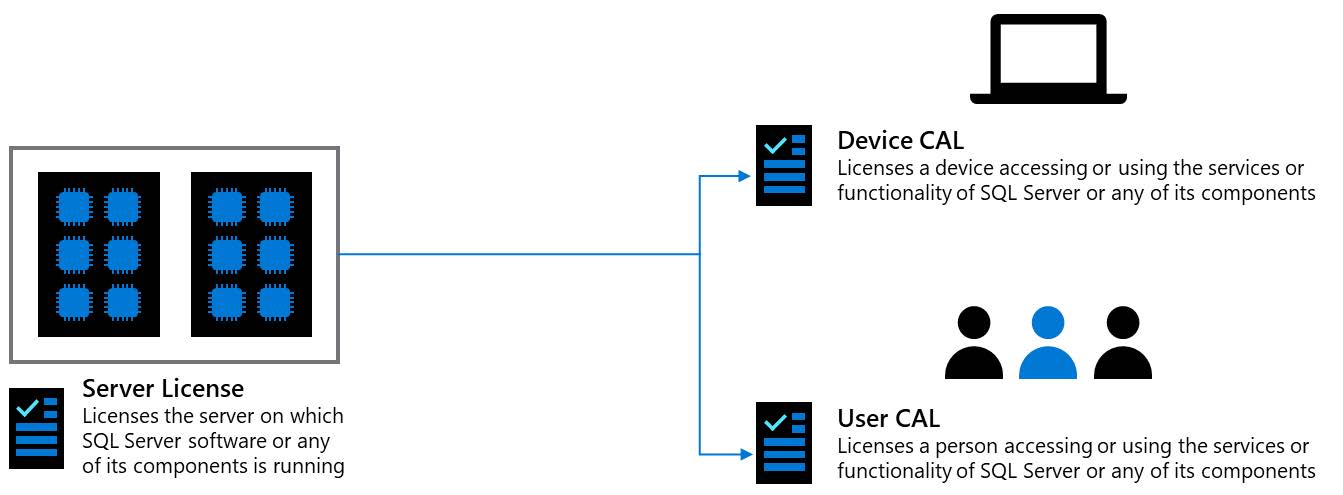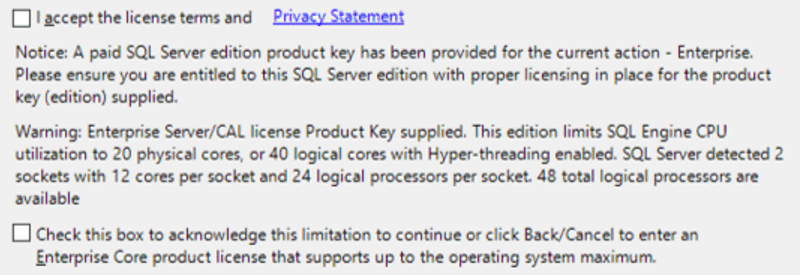
- #SQL SERVER 2012 ENTERPRISE EDITION LICENSE COST SOFTWARE#
- #SQL SERVER 2012 ENTERPRISE EDITION LICENSE COST LICENSE#
#SQL SERVER 2012 ENTERPRISE EDITION LICENSE COST SOFTWARE#
Software Assurance prevents the need to purchase additional SQL Server licenses.As agencies migrate to the cloud, consolidate their data centers and add ever more end-user devices to the enterprise network, reviewing and renewing licensing agreements has become increasingly important.
Each licensed VM covered with SA can move within a server farm, or to a third-party hoster. Standard Edition and legacy Business Intelligence and Enterprise Edition Servers. #SQL SERVER 2012 ENTERPRISE EDITION LICENSE COST LICENSE#
To license a single VM with a server license (for Standard Edition only), purchase a server license and matching SQL Server CALs for each user or device. To license a VM with core licenses, purchase a core license for each virtual core (virtual thread) allocated to the VM (with a minimum of 4 core licenses per VM). Save on low-usage Virtual Machine Databases by licensing individual VMs. This applies to large scale setups and private cloud environments.Īs hardware continues grow, databases will use less computing power. The ability to license single virtual machines and the ability to license for maximum virtualization. There are two primary virtualization licensing options in SQL Server 2016. SQL Server 2016 offers virtualization rights to provide flexibility for customers with virtual environments. Core licensing is used for Internet/Extranet workloads or systems that integrate with web facing databases. Core based licensing is appropriate for customers who are unable to count users or devices. Per core works for physical servers on-premises, or in virtual or cloud environments. Provides a more consistent licensing metric regardless of setup. PER CORE: Gives customers a precise measure of computing power. This includes Standard Edition, Business Intelligence and Enterprise Edition Servers. Each SQL Server CAL allows access to multiple licensed SQL Servers. To access a SQL Server 2012 Standard Edition server, a user would need a SQL Server 2012 or 2016 CAL. The CAL must be the same version or newer. Each user or device accessing a licensed SQL Server requires a SQL Server CAL. Each server running SQL Server software requires a server license. Low cost access to incremental SQL Server instances SERVER + CAL: Provides the option to license users and/or devices. 

There are two main licensing models that apply to SQL Server: These options align with how businesses typically host specific workloads. SQL Server 2016 offers customers a variety of licensing options.
Upgrading is less time-consuming with a wizard so companies can leverage the latest benefits faster than ever for more productivity.  SA licensing flexibility reduces cost so companies can scale to cloud-based and HA services or operate hybrid database environments. Cross-platform compatibility with Linux and Docker connects these platforms to improved security and performance and reduces costs from third-party support and development. These latest innovations further leverage Business Intelligence mobility to offer outstanding services to customers. New integrations with R and Python, combined with graph data support, improves data analysis. Improved performance with SQL Server 2017 increases overall application and organization performance with Adaptive Query Processing. SQL Server 2017 represents the most innovative database management and development platform yet with: With continued best-in-class security, 2017 innovates further with improved performance, cross-platform compatibility with Linux, better statistical and data science analysis services while reducing cost.
SA licensing flexibility reduces cost so companies can scale to cloud-based and HA services or operate hybrid database environments. Cross-platform compatibility with Linux and Docker connects these platforms to improved security and performance and reduces costs from third-party support and development. These latest innovations further leverage Business Intelligence mobility to offer outstanding services to customers. New integrations with R and Python, combined with graph data support, improves data analysis. Improved performance with SQL Server 2017 increases overall application and organization performance with Adaptive Query Processing. SQL Server 2017 represents the most innovative database management and development platform yet with: With continued best-in-class security, 2017 innovates further with improved performance, cross-platform compatibility with Linux, better statistical and data science analysis services while reducing cost. 
SQL Server 2017 builds on the features introduced in the 2016 version.








 0 kommentar(er)
0 kommentar(er)
